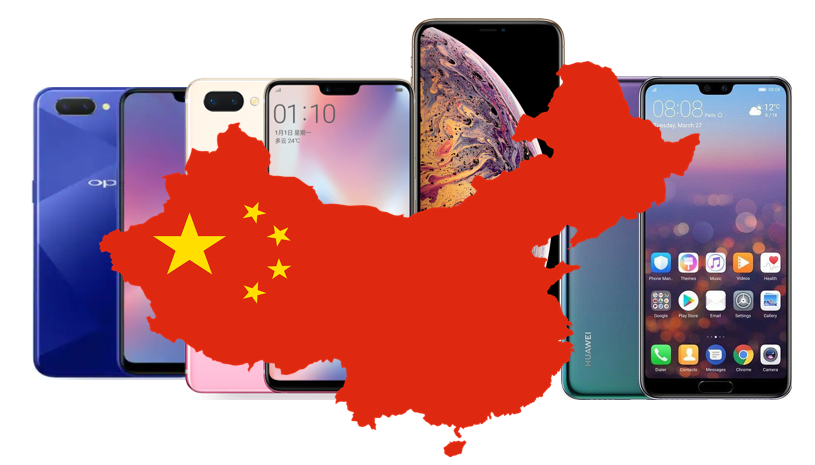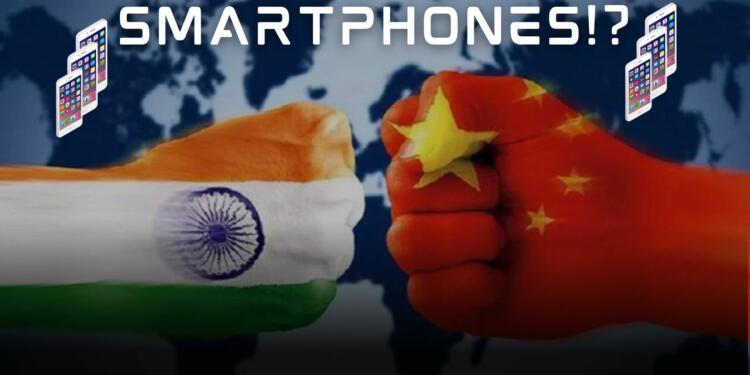In the ever-changing world of Indian smartphones, a perplexing tale unfolds—despite the government’s efforts to take a stand against Chinese smartphone brands, the Eastern dragons seem unbeatable. Three years of data paint a clear picture of Chinese dominance, with brands like Xiaomi, Vivo, and OPPO holding a tight grip on the market. While the government raises concerns about security and advocates for self-reliance, Indian brands like Karbonn, Micromax, and Lava struggle with less than 1% market share, victims of their lack of innovation and supply chain challenges. Once symbols of national pride, these brands now find themselves in a downward spiral.
In this dramatic clash of technologies, Indian brands, wounded and weakened, must find a way to face the unrelenting competition from their Chinese counterparts. The likes of Xiaomi, Vivo, and OPPO have conquered over 75% of the market with aggressive pricing, strong features, and extensive retail networks, leaving only crumbs for others. Even Samsung, maintaining a respectable 19% share in the premium segment, faces fierce competition from Chinese flagships. Apple, the luxury king, holds a mere 4% share, appealing only to a niche audience.
The question now is whether Indian brands can rejuvenate themselves and break free from the clutches of the dragon. Will they rise from the ashes, or will the Chinese dominance tighten even further? Only time will reveal the fate of India’s smartphone saga.
Why Negative presumptions?
The once-thriving Indian market for Chinese smartphones is facing a dark cloud in the form of data security concerns and recent raids by the Enforcement Directorate (ED). These developments have cast a shadow of doubt on the popularity of these devices, potentially impacting consumer trust and sales.
Data Laundering Allegations!
Accusations of data privacy violations and potential usage for money laundering schemes have been brewing for some time. Concerns revolve around pre-installed bloatware and excessive app permissions, raising fears of user data being siphoned off without consent.
These anxieties were heightened by a 2022 report by India’s cybersecurity agency CERT-In, which flagged several Chinese apps for data leaks and unauthorized data sharing. While the apps were taken down, the episode left a mark on consumer confidence.
ED Raids!
Further stoking the flames are recent raids by the ED on Indian distributors and retailers of some popular Chinese smartphone brands. The agency suspects financial irregularities and potential money laundering through inflated imports and shell companies. While investigations are ongoing, the news has created negative press for the brands involved and the broader Chinese smartphone market.
Chinese Manipulation!!
These developments have undoubtedly impacted consumer sentiment. Indian buyers, increasingly conscious of data privacy and national security, are becoming wary of Chinese smartphones. A recent survey by a market research firm revealed a significant drop in purchase intent for Chinese phones compared to previous years.
The dominance of Chinese smartphone giants in India, namely Xiaomi, Realme, Vivo, Oppo, and Poco, is a meticulously orchestrated scheme to deceive consumers. Xiaomi’s 23% market share is portrayed as benevolence, masking a strategic ploy. Realme, with 16%, targets Gen Z and millennials under the guise of stylish designs, concealing predatory innovation. At 15%, Vivo exploits small-town preferences, presenting a facade of understanding the heartland. Oppo, holding 13%, entices with sophistication while concealing manipulative tactics. Poco, a Xiaomi sub-brand, strategically courts tech enthusiasts with 5%, positioning for substantial influence. The narrative suggests calculated manipulation, not genuine competition among these five brands.

Non-Chinese Players
The Indian smartphone market, once a battleground for diverse brands, now shows a starkly tilted landscape dominated by Chinese giants. While this may seem like the final chapter for non-Chinese and Indian players, beneath the surface, murmurs of resilience and potential resurgence can still be heard.
Where Have All the Indian Brands Gone?
The Indian smartphone market, once a bustling landscape dotted with homegrown brands like Karbonn, Micromax, and Lava, has witnessed a dramatic shift in recent years. From holding over 20% market share in 2014, these Indian players have been relegated to the sidelines, currently commanding a meager 1% in 2023. While the reasons for their downfall are multifaceted, ranging from a lack of innovation to supply chain bottlenecks and inconsistent after-sales service, the question that looms large is this: do Indian smartphone brands still hold a flicker of hope, or is their fate sealed in the shadow of Chinese giants?
There’s no denying the formidable grip Chinese brands like Xiaomi, Realme, and Oppo hold on the Indian market. Their competitive pricing strategies, aggressive marketing campaigns, well-oiled distribution networks, and strategic localization efforts have been an unbeatable cocktail. Despite government initiatives like “Make in India,” aimed at bolstering domestic smartphone manufacturing, Chinese brands seem deeply entrenched, leveraging their market understanding and established ecosystem.
Also read: This report about “How affluent India is going to be” is just mind-numbing
Whispers of Hope
Yet, amidst the gloom, there are slivers of light that suggest a potential resurgence for Indian smartphones. The ever-expanding 5G landscape presents a new frontier, and those agile enough to adapt and innovate will reap the rewards. Indian brands, if they play their cards right, can capitalize on this burgeoning market by focusing on:
- Innovation at its core: Instead of chasing low-hanging fruit, Indian brands need to prioritize groundbreaking R&D, developing cutting-edge features and technologies tailored to the unique needs of Indian consumers. This could involve breakthroughs in battery life, camera technology, or even integration with local apps and services.
- Building a robust ecosystem: Beyond the hardware, it’s crucial to establish a thriving ecosystem of apps, content, and services that seamlessly integrate with Indian smartphones. This could involve partnerships with local developers, content creators, and service providers to offer unique experiences that resonate with Indian users.
- After-sales service that shines: Consistent and reliable after-sales support is a cornerstone of brand loyalty. Indian brands need to invest in building trustworthy service networks across the country, ensuring prompt and quality support that fosters trust and confidence among consumers.
- Embracing the “Make in India” spirit: The government’s push for domestic smartphone manufacturing presents a valuable opportunity. Indian brands can leverage this initiative to gain a competitive edge by offering high-quality, locally-made smartphones at attractive prices, tapping into the burgeoning national pride and supporting the local economy.
- Understanding the evolving consumer: The Indian smartphone user is constantly evolving, with changing preferences and growing demands. Indian brands need to be attentive to these shifts, conducting market research and actively engaging with consumers to understand their needs and aspirations. By catering to these evolving desires, they can create smartphones that resonate deeply with the Indian market.
The Future Awaits
The Indian smartphone market’s story is far from over. While Chinese giants currently hold the reins, the landscape is dynamic and ripe for disruption. Non-Chinese players and Indian brands, armed with the right strategies and unwavering resolve, can still turn the tide and reclaim their share of the battlefield. The emergence of 5G technology could open new opportunities, contingent on continuous innovation and adapting to changing consumer preferences.
The whispers of hope lie in the ever-expanding 5G landscape, where Indian brands can capitalize by prioritizing innovation, building robust ecosystems, ensuring excellent after-sales service, embracing the “Make in India” spirit, and understanding the evolving consumer.
Also watch:































